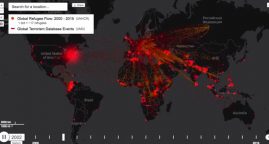Presence and Proximity, To Stay and Deliver, Five years On
Article published on reliefweb on 06/22/2017
Humanitarians operating in highly volatile environments face a wide range of institutional, operational, access, and security challenges that necessitate carefully designed responses and mitigation measures. These challenges and good practices were analyzed and subsequent recommendations provided in a landmark study, entitled To Stay and Deliver: Good Practice for Humanitarians in Complex Security Environments, commissioned by the United Nations Office for the Coordination of Humanitarian Affairs (OCHA) in 2011.
Five years on, the purpose of the present study is to examine progress in responding to the various issues raised in the original 2011 report.
More specifically, the present study examines the following questions.
How have the threats and risks facing humanitarian action in highly insecure environments shifted or developed since the publication of To Stay and Deliver, and what other contextual changes have emerged?
What institutional, operational, and cultural changes – with a focus on those recommended in To Stay and Deliver – have occurred since 2011, and what factors (e.g., institutional, cultural, financial, contextual, etc.) have enabled or impeded the adoption of these recommendations? Similarly, what persistent challenges appear to have remained over the past half-decade?
How have humanitarian organizations changed the ways they manage security risks, and what effects – to the extent discernible – have these strategies had on operational security, presence/proximity, and programming?
What factors have enabled or discouraged such changes? Have humanitarian organizations adopted new ways to maintain presence and proximity and conduct operations on the ground, and what results in assistance and protection have these achieved?
Building on the successes and addressing the complications that have emerged since 2011, what steps could be taken to further the objectives of To Stay and Deliver?
In addressing these questions, the authors consulted headquarters, regional, and country stakeholders in New York, Nairobi, Amman, and Geneva. They undertook field-based case studies in Afghanistan and the Central African Republic (CAR) and carried out desk-based case studies on Syria and Yemen. The research team also designed an online survey. These methods provided the researchers with access to a large cross-section of humanitarian actors – more than 2,000 individuals – operating in highly insecure environments. Despite the broad sample size, this study was undertaken over five months and the case studies were limited in number. As such, the study does not necessarily reflect all areas where progress has been made and all challenges that remain; nor can it overcome the deficits in existing data, which are outlined in the full report.
Related Articles
Safe havens: why cities are crucial to the global refugee crisis
06/06/2017. The world is facing unprecedented levels of population displacement. At least 65 million people are on the move, including 21.3 million refugees and 31 million internally displaced persons since the beginning of 2016.
Not Without Dignity: Views of Syrian Refugees in Lebanon on Displacement, Conditions of Return, and Coexistence
06/09/2017. This report makes it clear that the restoration of dignity will be important to creating the necessary conditions for return and peaceful coexistence and building a stable post-war Syria one day.
How change happens in the humanitarian sector – CHS Alliance launches flagship report
10/04/2018. Two years after the World Humanitarian Summit in Istanbul, at which the humanitarian sector committed to substantial changes, the Alliance’s flagship report sheds light on what has happened, what not and why.





